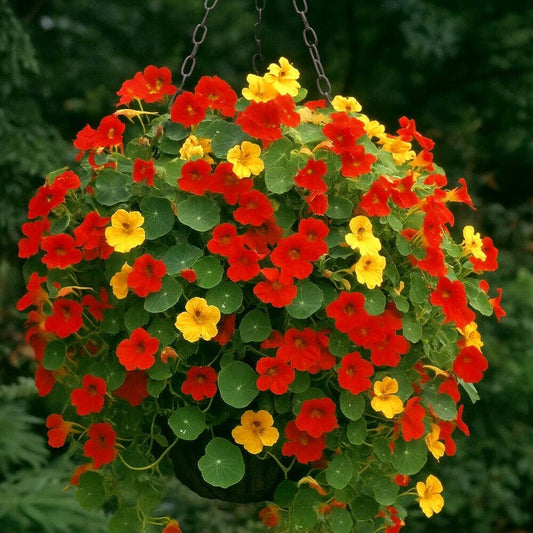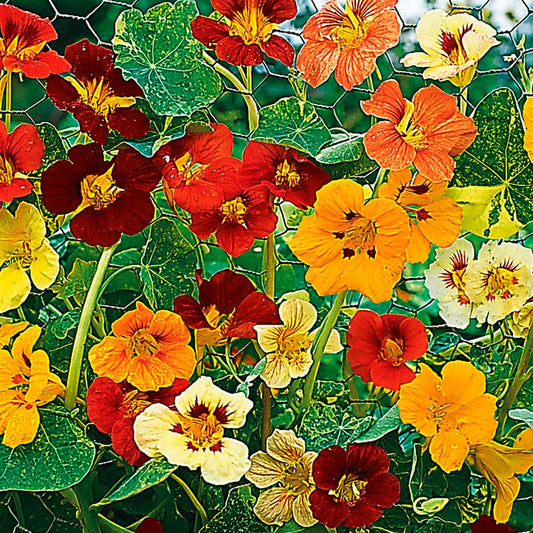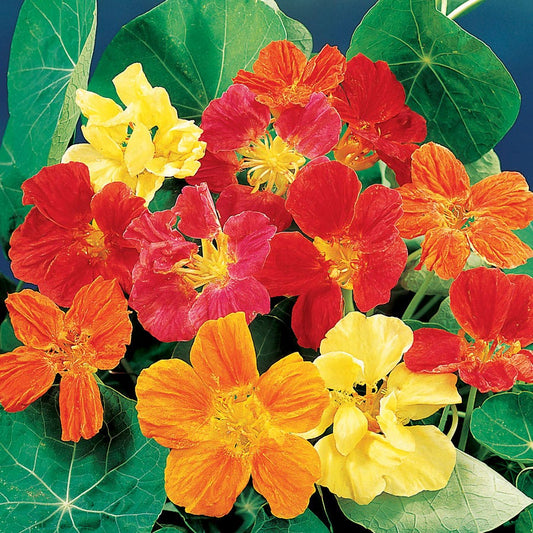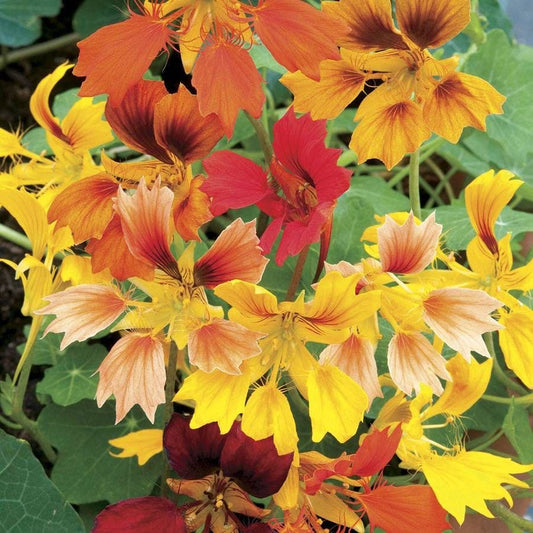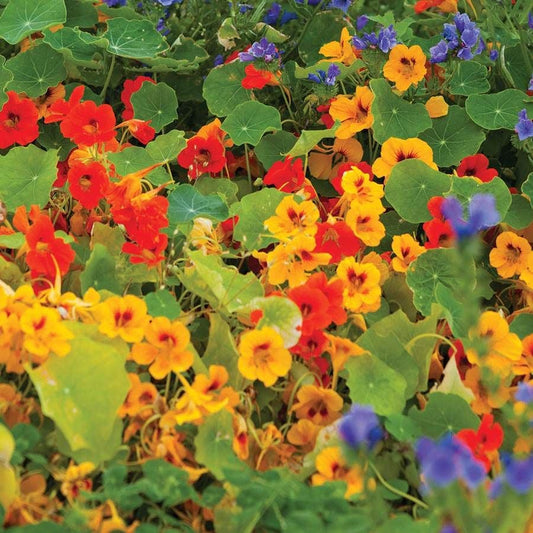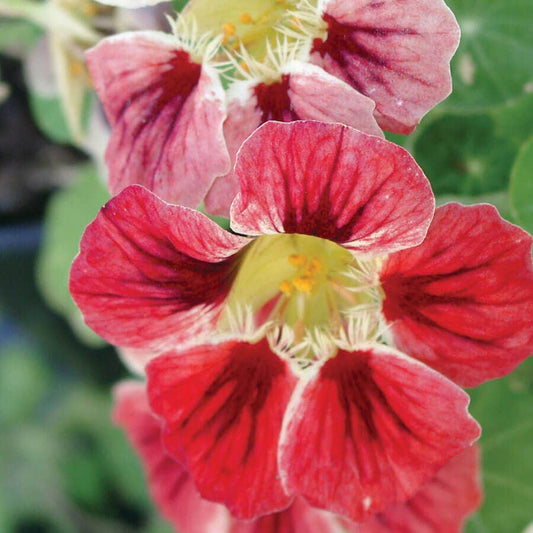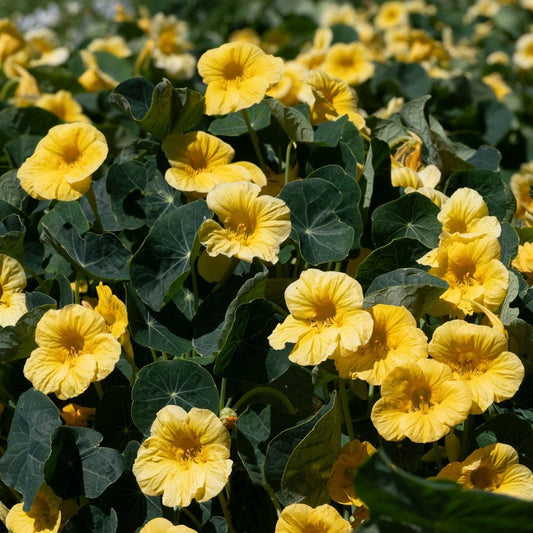Nasturtium Seeds
Nasturtium seeds are fast-growing, edible flowers that bring color and charm to any garden. Choose from varieties like Alaska Mix, Jewel Mix, or Baby Rose for reliable blooms. Shop our collection now and add these beginner-friendly flowers to your space for equal parts beauty and taste.
-
Park Seed Fragrant Giants Nasturtium Seeds
Regular price $4.95Regular priceUnit price / per$4.95Sale price $4.95 -
Jewel of Africa Nasturtium Seeds
Regular price $5.95Regular priceUnit price / per$5.95Sale price $5.95 -
Whirlybird Mix Nasturtium Seeds
Regular price $4.95Regular priceUnit price / per$4.95Sale price $4.95 -
Phoenix Nasturtium Seeds
Regular price $4.95Regular priceUnit price / per$4.95Sale price $4.95 -
'Dwarf Compact Mixed' Nasturtium Seeds
Regular price $4.95Regular priceUnit price / per$4.95Sale price $4.95 -
'Chameleon' Nasturtium Seeds
Regular price From $6.95Regular priceUnit price / per$6.95Sale price From $6.95 -
Baby Yellow Nasturtium Seeds
Regular price $5.95Regular priceUnit price / per$5.95Sale price $5.95 -
Baby Rose Nasturtium Seeds
Regular price $5.95Regular priceUnit price / per$5.95Sale price $5.95 -
Alaska Nasturtium Seeds
Regular price $19.95Regular priceUnit price / per$19.95Sale price $19.95
Nasturtium Seeds
What Month Do You Plant Nasturtium Seeds?
Plant nasturtium seeds in early to mid-spring, once all danger of frost has passed and soil temperatures are consistently above 55°F. For most USDA zones, this is typically April through May.
Gardeners in warmer zones (8–10) can plant as early as March, while cooler zones may need to wait until late May. Starting seeds outdoors is recommended, as nasturtiums don’t transplant well.
If you're unsure of your zone, use our USDA Hardiness Zone Map to find the best planting window for your area.
Do Nasturtiums Like Pots or the Ground?
Nasturtiums thrive in both containers and garden beds.
Potted nasturtiums are perfect for patios and balconies, while ground-planted varieties will spread beautifully along borders or as ground cover. Dwarf nasturtium seeds are especially great for pots.
What Not to Plant Next to Nasturtium?
Avoid planting nasturtiums near brassicas (like broccoli, cabbage, or cauliflower) if you're concerned about aphids, which nasturtiums may attract. These pests can spread to nearby brassica plants.
However, nasturtiums are one of the most popular companion plants because they serve as a "trap crop," drawing aphids and other insects away from vegetables you want to protect.
Great companion plants for nasturtiums include:
-
Tomatoes – Nasturtiums deter whiteflies and help reduce root-knot nematodes.
-
Zucchini and Squash – They attract squash bugs away from your main crop.
-
Cucumbers – The strong scent helps deter cucumber beetles.
-
Peppers – Nasturtiums provide natural pest control without chemicals.
-
Beans – They enhance pollination and ward off aphids.
Planting nasturtiums around the edges of your vegetable beds or interspersing them between crops can create a natural line of defense and bring bright color to your garden.
Where Is the Best Place to Plant Nasturtiums?
Plant nasturtiums in a sunny spot with well-draining soil. They prefer full sun but can tolerate partial shade, especially in hotter climates. Keep the soil slightly dry for the best flower production.
If you're looking for more plants you can grow in shady areas, try hosta, impatiens, and ferns.
5 Easy Steps to Plant Nasturtium Seeds
Growing nasturtiums from seed is easy and rewarding, even if you're new to gardening. Follow these simple steps to get strong, healthy blooms all season long:
-
Choose a sunny location in your garden or a roomy container where your plants will receive 6+ hours of sun daily.
-
Loosen the soil and avoid fertilizing—nasturtiums prefer lean, well-drained soil, and too much nutrition can lead to more leaves than flowers.
-
Sow seeds directly about ½ inch deep and 10–12 inches apart. There’s no need to start indoors, as nasturtiums don’t transplant well.
-
Water lightly after planting, and continue watering every few days until sprouts appear (typically in 7–10 days).
-
Watch them grow—nasturtiums usually bloom in 35–50 days and continue flowering through summer and early fall.
Quick tip: Soak seeds in water for 4–6 hours before planting to speed up germination and improve success rates.
This easy routine will give you lush, colorful flowers in no time. For more flower-growing tips, check out our Flower Gardening Guide.
